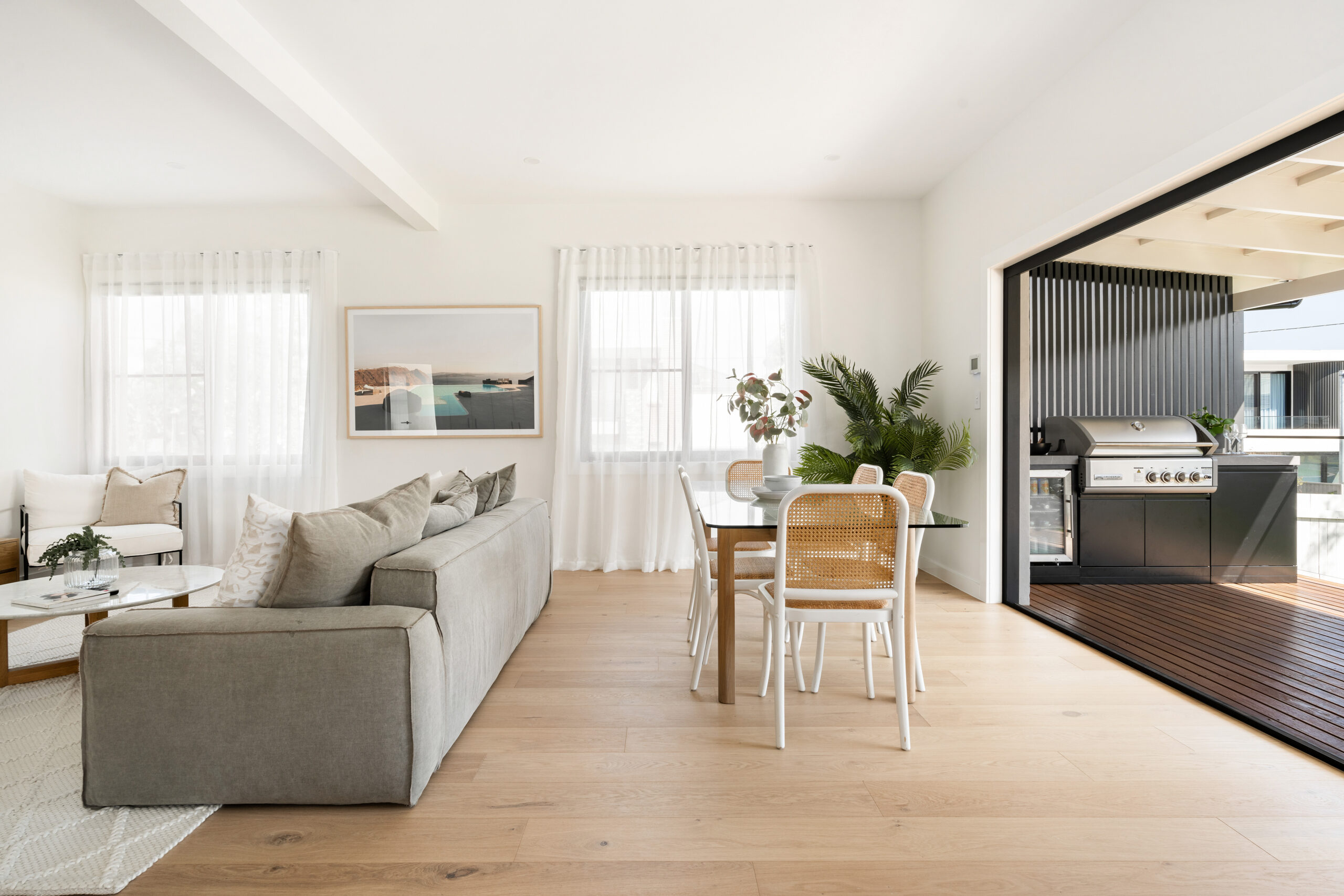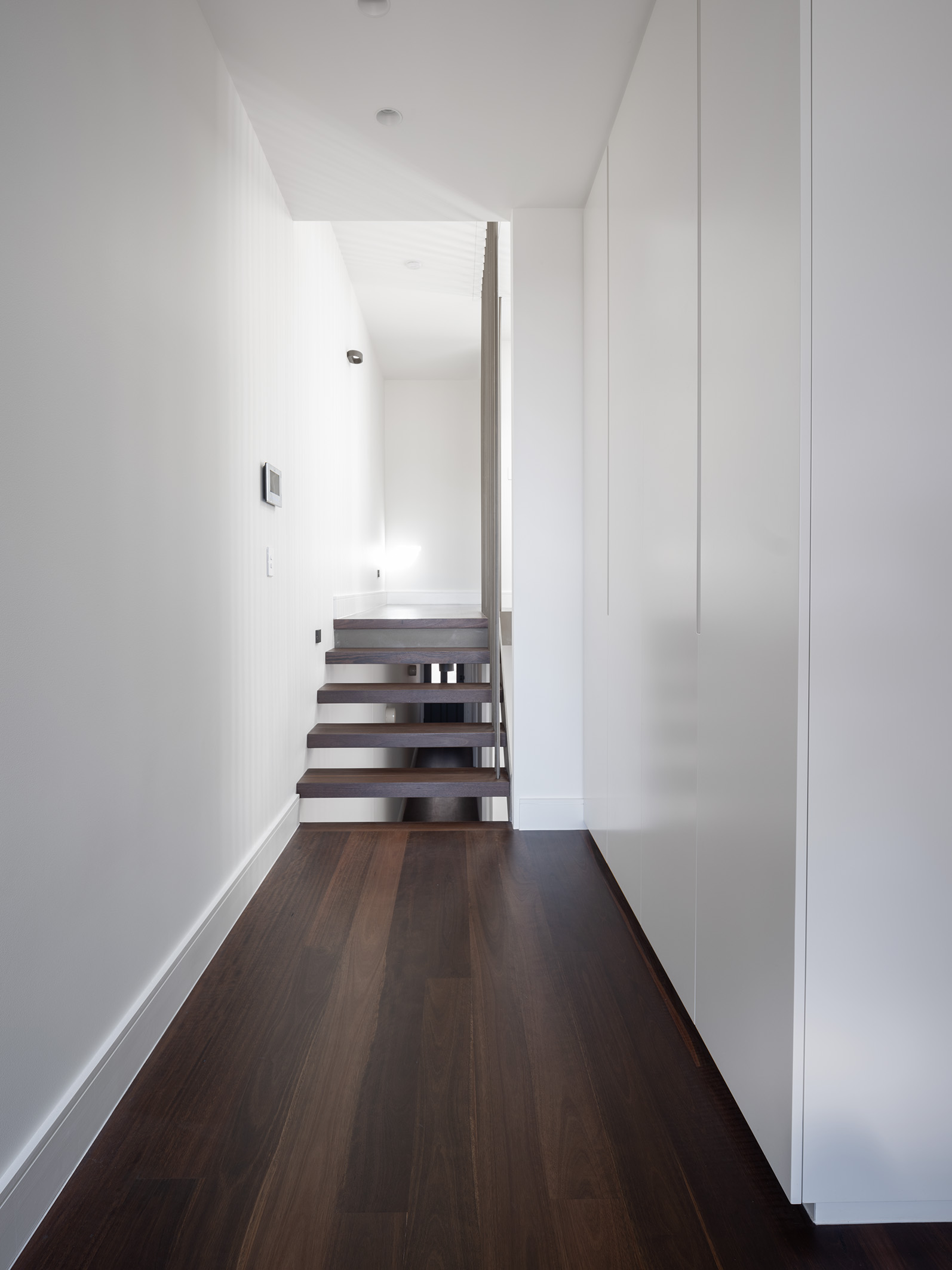
Homeowners and renovators often feel that they have a dilemma when it comes to choosing between engineered and solid timber flooring. Both options are good and offer unique benefits, and sometimes it can be difficult to understand what those differences mean for the specific project being considered. Ultimately you do need to make a choice, so it’s a good idea to speak to the experts at Madera Floors if you’re still unsure after reading this through.

Solid timber flooring consists of planks made from a single piece of hardwood, such as oak, blackbutt, or spotted gum. The planks are typically 18–22mm thick and can be sanded and refinished multiple times over their lifespan. Solid timber floors are prized for their natural beauty, longevity, and timeless appeal.
Advantages of Solid Timber Flooring
Disadvantages of Solid Timber Flooring
Engineered timber flooring consists of multiple layers, with a hardwood veneer on top and a core made of plywood, high-density fibreboard (HDF), or other composite materials. The thickness of the hardwood layer varies, typically ranging from 2mm to 6mm. This structure provides enhanced stability and resistance to moisture compared to solid timber.
Advantages of Engineered Timber Flooring
Disadvantages of Engineered Timber Flooring
Choosing between engineered and solid timber flooring depends on your priorities, budget, and the specific conditions of your home. Here are some scenarios to help guide your decision:
Ultimately, the best choice comes down to your budget, lifestyle, and the specific needs of your space. Whether you opt for the timeless elegance of the best solid timber flooring Sydney has to offer, or the versatility of engineered flooring, both options can enhance the beauty and value of your home for years to come.

 The Benefits of Timber Flooring Over Carpet and Tiles
The Benefits of Timber Flooring Over Carpet and TilesHomeowners and renovators often feel that they have a dilemma when it comes to choosing between engineered and solid timber flooring. Both options are good and offer unique benefits, and sometimes it can be difficult to understand what those differences mean for the specific project being considered. Ultimately you do need to make a choice, so it’s a good idea to speak to the experts at Madera Floors if you’re still unsure after reading this through.
 The Latest Trends in Timber Flooring for Australian Homes
The Latest Trends in Timber Flooring for Australian HomesTimber flooring has long been a favourite choice for Australian homeowners due to its timeless appeal, durability, and natural beauty. As home design continues to evolve, so too do flooring trends, reflecting changing lifestyles, environmental considerations, and advances in technology.
Contact
SHOWROOM
WAREHOUSE / COMMERCIAL
Operating Hours
9:00 AM – 5.00 PM
Monday – Friday
9:00 AM – 3.00 PM
Saturday
WHY VISIT OUR ZETLAND SHOWROOM?
Services
Number, Street, City, State, Zip Code